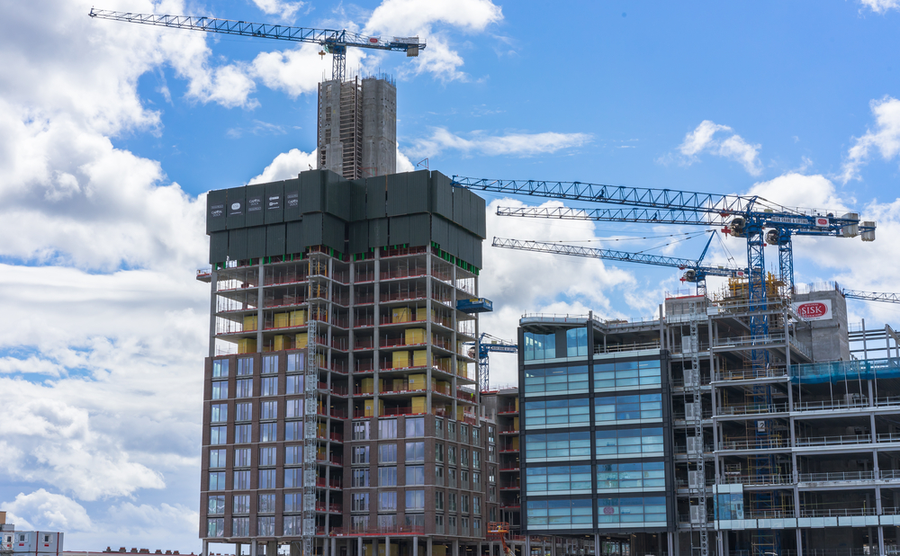For investors in Irish property, rental yields from the cities are in double figures, while capital growth for Irish property is exceptional too.
It’s not only lifestyle buyers, attracted by the pretty countryside and bucolic way of life, who purchase homes in Ireland. High returns from buy-to-let properties there are also enticing investors in Irish property too.
For the property market at least, the Celtic Tiger seems to have got its roar back. Here are some pointers for anyone in the market for an urban investment in the Emerald Isle in 2022.
Rent Pressure Zones
An important consideration for any investor in Ireland today is that many rental properties now fall within designated areas where rent rises are controlled by government legislation. Specifically, annual rent increases for any property within a so-called Rent Pressure Zone (RPZ) are capped in line with either the rate of general inflation, or 2%, whichever is lower.
RPZs were introduced in 2016 in areas where the market was especially hot and rental prices were deemed to be high and rising too steeply. Currently they are due to remain in place until 31 December 2024.
There are exemptions within RPZs. Firstly, properties that haven’t been let anytime within the previous two years, including new-builds. Secondly, properties within ‘protected structures or proposed protected structures’ that have not been let in the previous year. Thirdly, properties that have been ‘substantially changed’.
Note too, even if a property qualifies for an exemption, the new rent set must still be in line with similar properties in the area.
Today there are 53 Local Electorate Areas (LEA) across Ireland that are designated RPZs. Unsurprisingly many of these are in the country’s largest cities of Dublin, Cork, Galway, Limerick and Waterford, although smaller towns account for many too.
Check with the selling agent whether a property is subject to RPZ rules and that the figures work for you before committing to purchase it.
Dublin
The first choice for many investors, the Irish capital is spearheading continued rises in an already bullish rental market. The ongoing shortage of rental properties in the city continued into 2022, a nationwide trend that bodes well for investors.
A sign that any downward effects of Covid-19 have gone, average rental prices across Dublin increased by 4% between September and December 2021 and 8.9% year-on-year, according to the latest report from Daft.ie, Ireland’s largest property portal. Nationwide, these figures were 3% and 10.3% respectively.
In Dublin, North County and West County have been star performers with average annual rises of 13.9% and 11% respectively. Generally, yields across Dublin for most sectors of the market rose marginally year-on-year in Q4 2021 – yields of 7-10% for a one-bedroom flat are typical in many areas, with Dublin’s 10th, 17th and 22nd neighbourhoods all achieving over 10%.
Dublin developments
Dublin 18 on the city’s southern edge is a hub of new residential developments. The neighbourhood’s choice of new-build includes two and three-bed apartments at One Springfield Park (Foxrock), Cherry Lane’s two and three-bed duplexes plus houses in Cherrywood Village and in the Beechpark and Brennanstown Wood complexes in Cabinteely.

New builds in Dublin (John And Penny / Shutterstock.com)
More central options can be found in Dublin 4, including the Sanymount Castle Court development, which offers houses and apartments, Lansdowne Place in Ballsbridge with apartments and duplexes and at 143 Merrion Road, again offering apartments/penthouses. Or in Goatstown in Dublin 14 try the Trimbleston development of apartments/ penthouses and houses, which has a villagey feel while being a short ride into the city centre.
Let’s not forget Dublin’s hip Docklands area, which is attracting younger professionals, including those working in the burgeoning tech sector.
Investments in other Irish cities
Increases in average rental values have been equally strong in Ireland’s other metropolises, reveals Daft.ie’s report. In Cork, the rent for a one-bedroom flat was up 8.8% in the fourth quarter of 2021 compared to 2020. In Galway, this figure was 11.9 per cent, in Limerick 13.6% while Waterford stole the show with a rise of 14.7%. The corresponding yields for a one-bed flat are equally impressive: 8.9% in Cork, 8.9% in Galway, 10.2% in Limerick, and 10.1% in Waterford.







